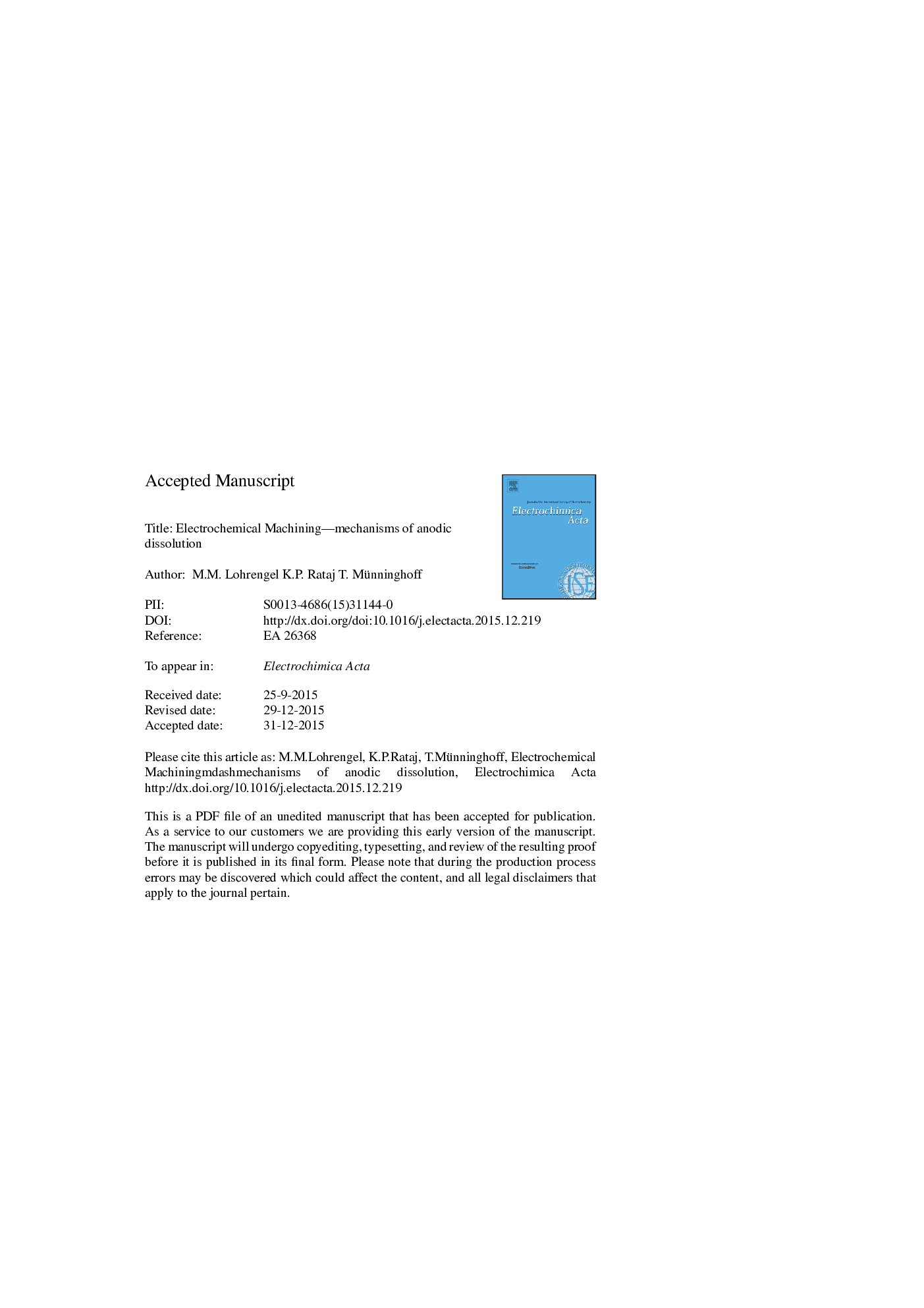| Article ID | Journal | Published Year | Pages | File Type |
|---|---|---|---|---|
| 6607641 | Electrochimica Acta | 2016 | 23 Pages |
Abstract
Electrochemical Machining (ECM) is widely used to produce products of high quality from metals and alloys. The work pieces are shaped by controlled anodic dissolution at extremely large current densities of about 100Â A/cm2 in neutral solutions (normally aqueous NaNO3). Scaling down of the active area of the working electrode to 10â3Â cm2 was necessary to enable current densities of some 100Â A/cm2 in a 3-electrode arrangement. Products were quantified at the electrolyte outlet by on-line photometry or fluorescence quenching and led to detailed models of the interface kinetics. The surface is described as a layered structure of an oxide film and a supersaturated, meta-stable viscous product film which is continuously removed by electrolyte flow. Fundamental dissolution mechanisms can be classified such as one-step or two-step anion makers, or spinel makers. Oxygen evolution reduces with increasing potential to about 10% of charge at >10Â A/cm2.
Related Topics
Physical Sciences and Engineering
Chemical Engineering
Chemical Engineering (General)
Authors
M.M. Lohrengel, K.P. Rataj, T. Münninghoff,
